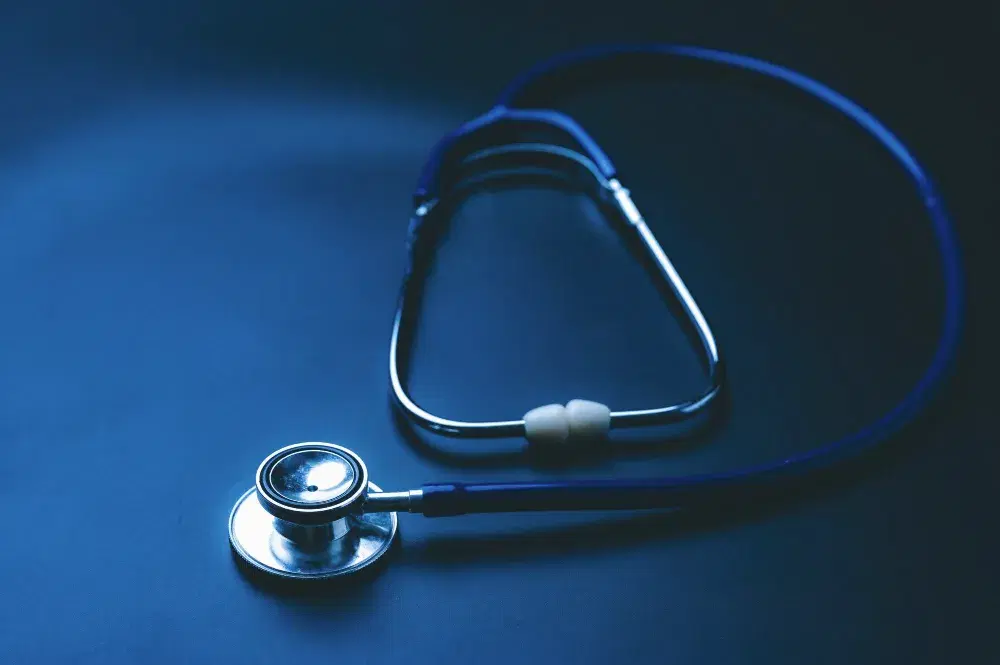- healthcare
- ai
How can artificial intelligence and machine learning cut costs in healthcare?
Jan 9, 2024
-
Damian Szewczyk
-
5 minutes

The Organisation for Economic Co-operation and Development (OECD) estimates that in 2022, the total medical expenditures per capita in the USA reached nearly $12,600. These costs are on the rise, not just in the United States but worldwide. This underscores the urgent need to reduce healthcare expenses without compromising patients' health.
In reality, there are numerous ways to achieve cost savings while enhancing the quality of healthcare services, ultimately leading to an improved patient experience and well-being. This article explores some of these strategies.
One highly effective option healthcare leaders can consider for cost reduction is implementing AI solutions, which also significantly improves the quality of care delivery. Here are some key AI applications for cost optimization in healthcare:
The predictive analytics capabilities of artificial intelligence offer significant value to hospitals and health systems. Machine learning algorithms can process vast amounts of data rapidly, uncovering patterns not easily discerned by humans. Armed with this knowledge, AI significantly enhances diagnosis accuracy and speed, supports early disease intervention, creates personalized treatment plans, and predicts drug effectiveness based on an individual's medical history.
Predictive analytics is also valuable for identifying high-risk populations and providing proactive care, including epidemic prevention. Additionally, AI can enhance the analysis of health parameters by monitoring electronic devices, leading to more effective medical interventions.
AI can accelerate healthcare system operations by automating time-consuming administrative tasks. Automated accounting, management of the supply chain for pharmacological products, and streamlined resource allocation are just some of the benefits of AI in healthcare, which result in reduced expenses.
AI also has great potential to process an ever-increasing amount of medical research and extract valuable insights that can improve the quality of medical services. Due to AI support, doctors can be provided with up-to-date information on recent medical research and stay informed about outdated practices that have proven harmful to patients, as well as new findings that can improve patient well-being.
In addition, automating tasks can improve the accessibility of healthcare. For instance, AI-powered virtual assistants can provide patients with 24/7 access to important information. Combined with optimized resource allocation, this can reduce waiting times for patients. Patients can also receive more mental health support through dedicated apps and chatbots powered by AI.
In many countries, healthcare systems are obligated to meet strict data security requirements. AI can help medical facilities comply with such regulations by dynamically detecting security vulnerabilities, preventing breaches, and effectively notifying healthcare organizations of ongoing attacks.
At the same time, AI solutions are useful for detecting fraud and anomalies in large data sets containing patient data.
As mentioned earlier, AI is a useful component of many disease prevention strategies. However, there are many other actions that medical organizations can take to help patients avoid developing diseases and thus reduce the need for costly treatments.
Making regular screenings and vaccinations widely available is one of the essential steps. As mentioned earlier, some visits to specialists can be replaced by intelligent virtual assistants.
Promoting healthy lifestyles, including dietary habits and physical activity, and educating individuals about mental conditions can help reduce healthcare costs by preventing many costly health problems.
Medical facilities can minimize expenses by monitoring the effectiveness and appropriateness of prescribed procedures, including medications, treatments, or tests.
It is necessary to maintain balanced utilization to prevent excessive prescriptions of unnecessary screenings and treatments, as well as ineffective medical care caused by inadequate diagnosis.
The traditional way of rewarding the work of a clinician is based on the fee-for-service model, which compensates for time and effort. An alternative option focusing on cost optimization and increasing the quality of services is a value-based payment model.
In this scenario, healthcare providers are incentivized for positive treatment outcomes rather than the quantity of medical services provided to a patient.
New medical equipment can be rather costly, especially if it incorporates state-of-the-art technological solutions. However, as long as a medical organization can afford more modern medical devices, it is highly recommended to invest in them.
Outdated medical equipment can cause many problems that will inevitably jeopardize patients' health and result in excessive treatment costs.
For example, older models of infusion pumps and delivery systems for pharmacological products had lower dosing accuracy, resulting in medication dosage errors. These, in turn, can have life-threatening consequences for patients.
Another example is outdated radiation therapy equipment, which has lower precision. Such machines expose patients to unnecessarily high radiation levels that can adversely affect their health.
Other costly impacts on human health and budgets caused by outdated equipment include inaccurate diagnoses, monitoring issues, infection control problems, treatment delays, and general patient discomfort.
While it may seem impossible, healthcare organizations can effectively cut costs without compromising patient well-being, and there are many options to choose from.
AI solutions can be of particular help to medical professionals due to predictive analytics, automation, monitoring, and detection capabilities that can optimize virtually every part of the healthcare routine.
Improved utilization management, transitioning to value-based payment methods for medical services, and investments in advanced medical equipment are other ways to optimize costs.
Meanwhile, all of these strategies are primarily aimed at improving healthcare, which is the most effective way to reduce expenses.

Did you know you can reduce business downtime with AI? See how tools from smart monitoring to predictive maintenance keep your business online.

From innovation to intrusion? AI’s use of data scraping is raising more than a few red flags for privacy and consent - find out where the line is being crossed.

Explore how AI transforms cybersecurity with intelligent threat detection, advanced tools, and smarter defense systems. Is your organization ready to keep up?